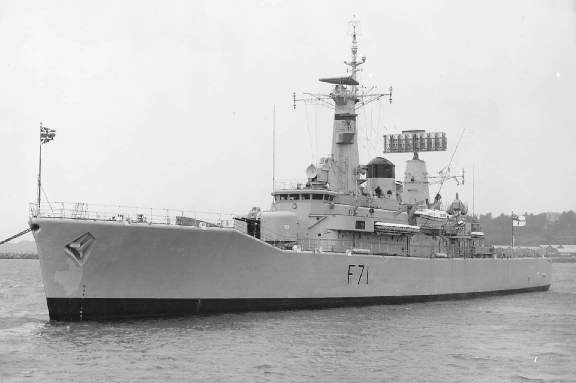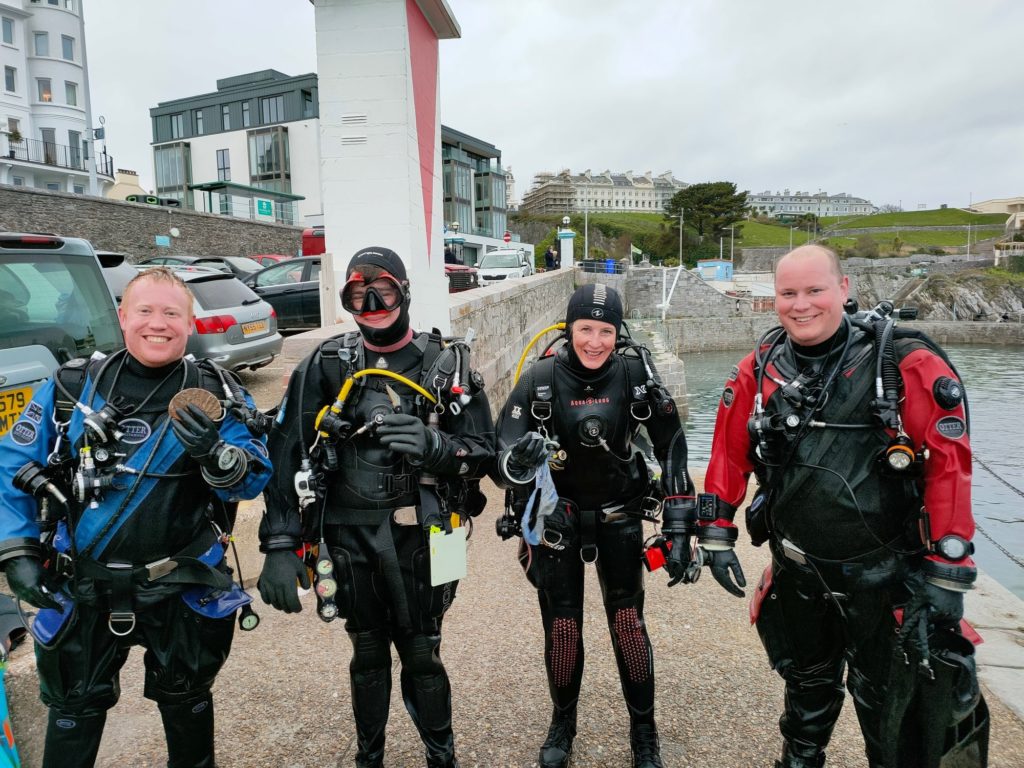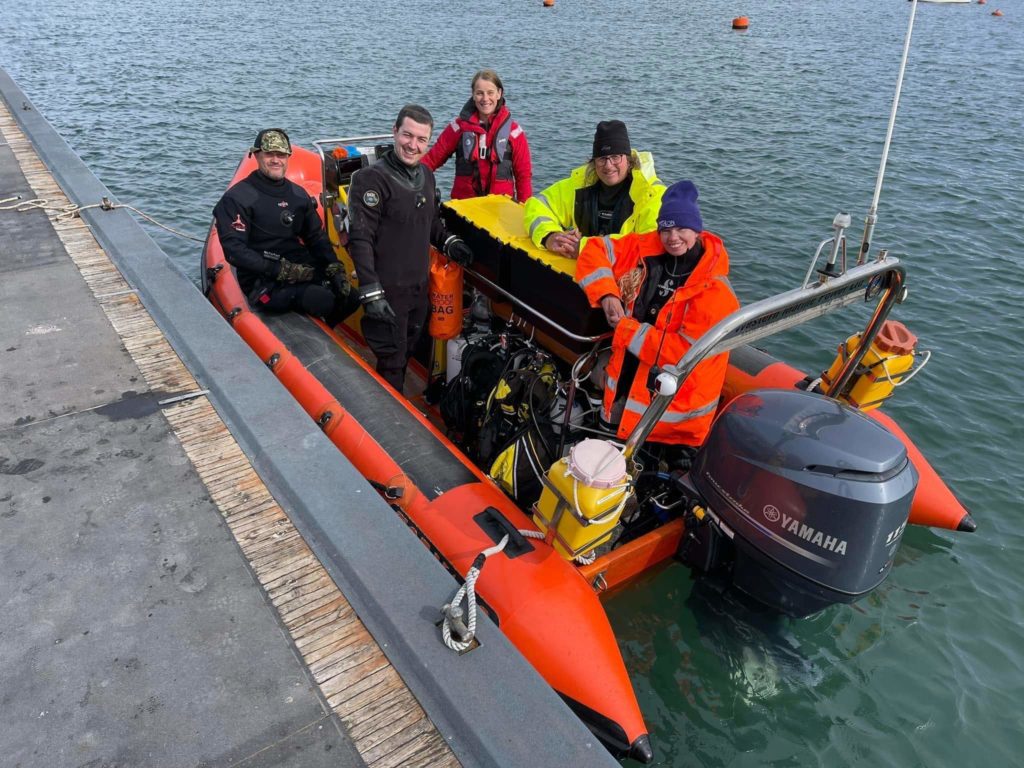HMS Scylla
Scylla Coordinates: (50º19.665 N, 004º15.162 W)

The Scylla was the last frigate to be built at Devonport in 1968. She was decommissioned in 1993.
The last Royal Navy Leander class frigate to be built in Devonport Dockyard, HMS Scylla, was placed on the seabed in Whitsand Bay, South Cornwall on 27th March 2004. The reef was placed there by the National Marine Aquarium in Plymouth with funding from the South West of England Regional Development Agency as a giant climbing frame for divers. The vessel had its top chopped-off and holes cut into the side to allow divers to look into the compartments.
This is Europe’s first artificial diving reef. The wreck lies upright on a sandy sea bed of about 23m. Top depth is about 9m. She is 113m long and 13m wide.
There is much more marine life to fascinate the amateur naturalist and, in 2007, the sea fans settled so adding to the beauty of the reef. Scylla is excellent for photography.
The Scylla has settled nicely into the environment. She is well colonised by all sorts of sedentary plants and animals. Many fish find the wreck a great place to live around. For divers, the wreck goes from strength to strength. This is quite a unique wreck in that she has been positioned and prepared with divers in mind. After nearly 15 years the fruits of this approach are obvious. The Scylla is extant and gives all sorts of divers the possibilities for different dive experiences (Photography, marine life etc). A great site for training divers due to its different depths. You can look through the covered walkways down port and starboard side of the main deck which have become bright tunnels covered in marine life. You can swim underneath the stern and see the prop shafts. You can look into compartments and see what was, not so long ago, a working environment for naval people. There’s so much to see, both structurally and in the abundance of marine species. The hatches and holes which have been cut in the bulkheads allow you to look into the wreck but be aware that the inside of the wreck is very silty. Entry should only ever be attempted by divers who have appropriate additional equipment and training, as part of a planned exercise.
In short, the Scylla is a great wreck dive.
Divers – no real problem with currents but the site is not slack-free. More of an issue is visibility – partly caused by wildebeest divers and partly by the site. And be aware of other divers. In season this site can suffer from diver saturation.
Learn more about the Life of Ex-HMS Scylla From Dr Keith Hiscock MBE
A established Marine Biologist, Diver and Member of Plymouth Sound Divers has created a great Presentation to guide you on your next diving adventure.
Contact Keith Hiscock MBE for more information.
Learn more about Plymouth Sound Divers

Plymouth Sound Divers is a branch of the British Sub Aqua Club (BSAC) and operates a membership scheme this provides the club with resources to allow diving to happen in an accessible way. By joining; you support club diving activities and gain a range of benefits.
The club’s membership is made up of about 80 people who have a range of interests and skill levels. If you are interested in marine life, historical sites or deep wrecks our club community is perfect for you.
Diving HMS Scylla

Plymouth Sound Dive Club visit the wreck frequently but avoids weekends in the summer when boat traffic gets a bit busy. This is a great site for training and building up your confidence in British Waters.
If you would like to dive this wreck we recommend first speaking to our partner dive shop. Sandford and Down. They will be able to provide you with a guide, equipment hire and advice.